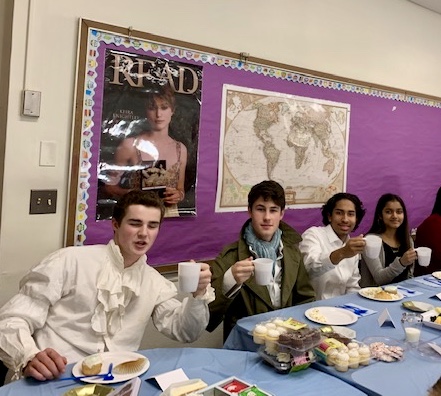“It isn’t what we say or think that defines us, but what we do.” Jane Austen wrote it and FFT Fellows embody it. Especially those who research Jane Austen on their fellowships.
Kelsey Nichols (Joel Barlow High School – Redding, CT) credits Austen with her decision to become an English teacher. Therefore, it stands to reason that she would write a grant proposal to experience lectures, workshops and culturally-immersive experiences at the Teacher’s Seminar at the University of Cambridge.
“Through some strings pulled by the program’s director, I was granted an appointment at the King’s College Archives to see (and personally handle) Jane Austen’s original manuscript of her final and unfinished novel, Sanditon,” said Kelsey. “Handling Jane Austen’s manuscript and seeing her original work for myself reignited the reverence and respect I hold for literature, reminding me of why I thought I could become a teacher of literature and do my part in preserving such legacies.”
Kelsey says her fellowship provided the time, distance, and academic environment needed to reacquaint myself with my own love of literature.
“I reconnected with my reason for becoming a teacher and that alone created a renewed sense of purpose in teaching students how to pursue, access, evaluate, and apply literature to their writing and lives outside the classroom. With my teaching being reinvigorated by my time at Cambridge, my classroom will once again be passionate and engaging, not flat or tedious.”
One aspect of that classroom is a new Jane Austen Book Club. Artifacts and photos Kelsey collected at the Jane Austen House Museum add to the experience.
“Studemts read one of Austen’s novels per month and meet every seven school days to not only engage in critical discussion of her work, but also to experience Regency-era pastimes such as traditional letter writing in script and afternoon tea,” said Kelsey. “Each month concludes with an after-school film party in my classroom where we watch the movie adaptation of that month’s novel.”
For Kelsey, the most rewarding part is listening to students’ first reactions to characters, events, and conflicts of Austen’s novels.
“Austen’s novels are over two-hundred years old now, and my fifteen year old students – all from different family dynamics and life experiences – are easily relating to her and even applying what they’ve been reading to situations in their own lives,” she said.
“Ultimately what I love about this club and these books is how it has taught me how the Regency-era, a time period which I knew virtually nothing about, could relate to each and every one of our club members,” said club member Melissa. “Austen has taught me the true timelessness of her satire and insights and how literature can truly unify even this extremely heterogenous group within our club.”
- Kelsey’s vintage Austen collection
- Visiting The Jane Austen House Museum
[minti_divider style=”1″ icon=”” margin=”20px 0px 20px 0px”]
Twenty miles south at Stamford High School, Melissa Hadsell‘s students celebrated Jane’s birthday on Friday, also the culmination of their Pride & Prejudice study. Students came to class dressed as their favorite characters (as Melissa did at The Jane Austen Center in Bath, England); tea, card games and Austen trivia rounded out the celebration. Enjoy these photos from their day and have a Darcy-worthy Jane Austen Day yourself!








